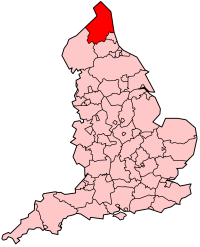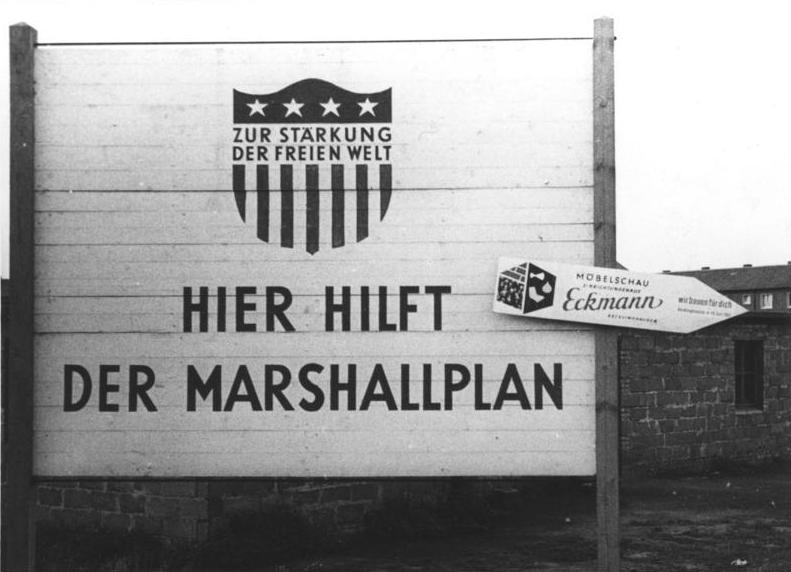|
Goswick Rail Crash
The Goswick rail crash occurred on 26 October 1947 near the village of Goswick, Northumberland, England. The '' Flying Scotsman'' express from Edinburgh Waverley to London King's Cross failed to slow down for a diversion and derailed. Twenty-eight people were killed, including the talented Scottish biochemist, John Masson Gulland. It was the last major accident to occur on British railways before their nationalisation on 1 January 1948. Overview The train was scheduled to divert from the fast line to a goods loop at Goswick, Northumberland, between Berwick-upon-Tweed and Morpeth, because of engineering work. This required a significant reduction in speed, but the driver failed to react to a cautionary signal approaching the diversion and the train entered a turnout at approximately . The engine, A3 Class No. 66 "Merry Hampton", and most of the train derailed and overturned. The driver, fireman and guard had all failed to read the notice of the diversion posted at Haymark ... [...More Info...] [...Related Items...] OR: [Wikipedia] [Google] [Baidu] |
Goswick
Goswick () is a hamlet in Northumberland, England, situated approximately south-east of Berwick-upon-Tweed, England, between the A1 and the North Sea coast. History Goswick station Goswick station was opened in November 1870 when it was known as ''Windmill Hill Station'', but it was renamed ''Goswick station'' on 1 January 1898. It was part of the East Coast Main Line (ECML) which ran from London to Edinburgh.Northumberland Railways - Goswick station In 1907 Goswick was the site of an Express Goods train derailment. From 5 May 1941 until 7 October 1946 the station was closed to passengers as part of the economy measures. ... [...More Info...] [...Related Items...] OR: [Wikipedia] [Google] [Baidu] |
Bourne End Rail Crash
The Bourne End rail crash occurred on 30 September 1945 when a sleeper train from Perth to London Euston derailed, killing 43. The cause was driver error, possibly compounded by ambiguous signalling regulations. Overview The train was the 15-coach overnight Perth to London Euston express hauled by LMS Royal Scot Class 4-6-0 No 6157 ''The Royal Artilleryman''.''British Rail Disasters'' publ. Ian Allan Publishing, 1996 Because of engineering work in Watford tunnel, it was scheduled to divert from the fast to the slow lines at Bourne End, near Hemel Hempstead. However, the driver failed to slow the train down in response to cautionary signals on the approach to the diversion, and it entered a turnout at nearly . The engine and the first six carriages overturned and fell down an embankment into a field; only the last three coaches remained on the rails. The morning was fine and sunny, and the driver who was highly experienced with a particular reputation for being conscientious ... [...More Info...] [...Related Items...] OR: [Wikipedia] [Google] [Baidu] |
1947 Disasters In The United Kingdom
It was the first year of the Cold War, which would last until 1991, ending with the dissolution of the Soviet Union. Events January * January–February – Winter of 1946–47 in the United Kingdom: The worst snowfall in the country in the 20th century causes extensive disruption of travel. Given the low ratio of private vehicle ownership at the time, it is mainly remembered in terms of its effects on the railway network. * January 1 - The Canadian Citizenship Act comes into effect. * January 4 – First issue of weekly magazine ''Der Spiegel'' published in Hanover, Germany, edited by Rudolf Augstein. * January 10 – The United Nations adopts a resolution to take control of the free city of Trieste. * January 15 – Elizabeth Short, an aspiring actress nicknamed the "Black Dahlia", is found brutally murdered in a vacant lot in Los Angeles; the mysterious case is never solved. * January 16 – Vincent Auriol is inaugurated as president of France. * January 19 – Ferry ... [...More Info...] [...Related Items...] OR: [Wikipedia] [Google] [Baidu] |
Accidents And Incidents Involving London And North Eastern Railway
An accident is an unintended, normally unwanted event that was not directly caused by humans. The term ''accident'' implies that nobody should be blamed, but the event may have been caused by unrecognized or unaddressed risks. Most researchers who study unintentional injury avoid using the term ''accident'' and focus on factors that increase risk of severe injury and that reduce injury incidence and severity. For example, when a tree falls down during a wind storm, its fall may not have been caused by humans, but the tree's type, size, health, location, or improper maintenance may have contributed to the result. Most car wrecks are not true accidents; however English speakers started using that word in the mid-20th century as a result of media manipulation by the US automobile industry. Types Physical and non-physical Physical examples of accidents include unintended motor vehicle collisions, falls, being injured by touching something sharp or hot, or bumping into some ... [...More Info...] [...Related Items...] OR: [Wikipedia] [Google] [Baidu] |
Derailments In England
In rail transport, a derailment occurs when a rail vehicle such as a train comes off its rails. Although many derailments are minor, all result in temporary disruption of the proper operation of the railway system and they are a potentially serious hazard. A derailment of a train can be caused by a collision with another object, an operational error (such as excessive speed through a curve), the mechanical failure of tracks (such as broken rails), or the mechanical failure of the wheels, among other causes. In emergency situations, deliberate derailment with derails or catch points is sometimes used to prevent a more serious accident. History The first recorded train derailment in history is known as the Hightstown Rail Accident in New Jersey that occurred on November 8, 1833. The train was traveling between Hightstown and Spotswood New Jersey and derailed after an axle broke on one of the carriages as a result of a journal box catching fire. The derailment resulted in ... [...More Info...] [...Related Items...] OR: [Wikipedia] [Google] [Baidu] |
History Of Northumberland
Northumberland, England's northernmost county, is a land where Roman occupiers once guarded a walled frontier, Anglian invaders fought with Celtic natives, and Norman lords built castles to suppress rebellion and defend a contested border with Scotland. The present-day county is a vestige of an independent kingdom that once stretched from Edinburgh to the Humber, hence its name, meaning literally 'north of the Humber'. Reflecting its tumultuous past, Northumberland has more castles than any other county in England, and the greatest number of recognised battle sites. Once an economically important region that supplied much of the coal that powered the industrial revolution, Northumberland is now a primarily rural county with a small and gradually shrinking population. Prehistory As attested by many instances of rock art, the Northumberland region has a rich prehistory. Archeologists have studied a Mesolithic structure at Howick, which dates to 7500 BC and was identified as Br ... [...More Info...] [...Related Items...] OR: [Wikipedia] [Google] [Baidu] |
1947 In England
It was the first year of the Cold War, which would last until 1991, ending with the dissolution of the Soviet Union. Events January * January– February – Winter of 1946–47 in the United Kingdom: The worst snowfall in the country in the 20th century causes extensive disruption of travel. Given the low ratio of private vehicle ownership at the time, it is mainly remembered in terms of its effects on the railway network. * January 1 - The Canadian Citizenship Act comes into effect. * January 4 – First issue of weekly magazine '' Der Spiegel'' published in Hanover, Germany, edited by Rudolf Augstein. * January 10 – The United Nations adopts a resolution to take control of the free city of Trieste. * January 15 – Elizabeth Short, an aspiring actress nicknamed the "Black Dahlia", is found brutally murdered in a vacant lot in Los Angeles; the mysterious case is never solved. * January 16 – Vincent Auriol is inaugurated as president of France. * January 19 ... [...More Info...] [...Related Items...] OR: [Wikipedia] [Google] [Baidu] |
Railway Accidents In 1947
Rail transport (also known as train transport) is a means of transport that transfers passengers and goods on wheeled vehicles running on rails, which are incorporated in tracks. In contrast to road transport, where the vehicles run on a prepared flat surface, rail vehicles (rolling stock) are directionally guided by the tracks on which they run. Tracks usually consist of steel rails, installed on sleepers (ties) set in ballast, on which the rolling stock, usually fitted with metal wheels, moves. Other variations are also possible, such as "slab track", in which the rails are fastened to a concrete foundation resting on a prepared subsurface. Rolling stock in a rail transport system generally encounters lower frictional resistance than rubber-tyred road vehicles, so passenger and freight cars (carriages and wagons) can be coupled into longer trains. The operation is carried out by a railway company, providing transport between train stations or freight customer faciliti ... [...More Info...] [...Related Items...] OR: [Wikipedia] [Google] [Baidu] |
Railway Accidents And Incidents In Northumberland
Rail transport (also known as train transport) is a means of transport that transfers passengers and goods on wheeled vehicles running on rails, which are incorporated in Track (rail transport), tracks. In contrast to road transport, where the vehicles run on a prepared flat surface, rail vehicles (rolling stock) are directionally guided by the tracks on which they run. Tracks usually consist of steel rails, installed on Railroad tie, sleepers (ties) set in track ballast, ballast, on which the rolling stock, usually fitted with metal wheels, moves. Other variations are also possible, such as "slab track", in which the rails are fastened to a concrete foundation resting on a prepared subsurface. Rolling stock in a rail transport system generally encounters lower friction, frictional resistance than rubber-tyred road vehicles, so passenger and freight cars (carriages and wagons) can be coupled into longer trains. The rail transport operations, operation is carried out by a ... [...More Info...] [...Related Items...] OR: [Wikipedia] [Google] [Baidu] |
Books On British Railway Accidents
There are a number of books on British railway accidents which provide aid in the systematic study of the causes and effects of accidents, and their prevention. There are common themes in many accidents (see Classification of railway accidents, Classification). Key books are listed here to avoid repeating them for each individual accident. The doyen is L. T. C. Rolt's ''Red for Danger'', first published in 1956, which takes a wide-ranging overview of over 100 accidents. Most other books concentrate on a smaller number of specific accidents, described in more detail. O.S. Nock's "Historic Railway Disasters" combines both approaches, with individual chapters on especially significant accidents such as Armagh rail disaster, Armagh and Quintinshill rail crash, Quintinshill. For accidents in the last 30 years and modern operating practice, Stanley Hall's four books are particularly good. Apart from Schneider and Mase (1968/1970) and Faith (2001), all the books below are confined to ... [...More Info...] [...Related Items...] OR: [Wikipedia] [Google] [Baidu] |
Lists Of Rail Accidents
This is the list of rail accident lists. Lists By year By type *By country * By death toll *Terrorist incidents See also * Classification of railway accidents * Derailment *Rail Transport * Train wreck A train wreck, train collision, train accident or train crash is a type of disaster involving one or more trains. Train wrecks often occur as a result of miscommunication, as when a moving train meets another train on the same track; or an acci ... * Tram accident * Train-pedestrian fatalities {{DEFAULTSORT:Rail accidents ... [...More Info...] [...Related Items...] OR: [Wikipedia] [Google] [Baidu] |



.jpg)


